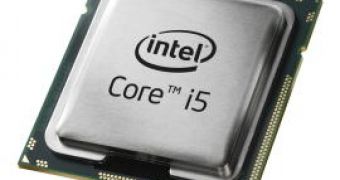Santa Clara, California-based Intel, the world's leading processor maker, officially announced on Tuesday the expansion of its consumer desktop-processor lineup with the introduction of the much-anticipated Lynnfield processors. In addition to three new chips designed for the mainstream market and part of the chip maker's Core i7 and Core i5 lineups, Intel also introduced the P55 platform, which has been specifically designed to support the latest chips. The introduction of the new chips will provide more users with an alternative for the company's latest processor microarchitecture, codenamed Nehalem.
The launch of Intel's much-hyped Lynnfield processors and P55 platform will provide users with three new processors and a range of new P55-based motherboards, coming from all the major motherboard makers. Starting with the lowest Core i5 750 part, it has been featured with a clock speed of 2.66GHz and most of the other features that are available for the new Lynnfield-based Core i7 parts. The new Core i5 processor can be paired with a P55 motherboard and a dual-channel DDR3 memory, providing users with Intel's new Turbo Boost technology, which effectively increase the clock speed of a processor core, when other cores aren't in use.
For those looking for a boost of performance, but within an affordable package, Intel also rolled out its new Core i7 800 series, based on the same Lynnfield architecture. These parts are compatible with the new LGA1156 socket, available on all of the upcoming P55 motherboards, providing users with a more affordable choice for a desktop computer system. The new models include the Core i7 860 and Core i7 870, which come with a factory-set clock speed of 2.8GHz and 2.93GHz, respectively. With Turbo Boost, the two can provide users with speeds of up to 3.46GHz and 3.6GHz, respectively. In addition, unlike the new Core i5 model, the new Core i7 Lynnfield processors have also been featured with Intel's Hyper-Threading technology, meaning that users will take advantage of double the physical processor cores available on the chip.
All these CPUs have been designed to work with Intel's new mainstream platform, the much-anticipated P55, which has essentially transformed the way a motherboard is built. Unlike previous platforms, the new chip enables motherboard makers to build boards with only one chip, effectively producing a more energy-efficient product. The P55 is designed to include up to eight PCIe 2.0 x1, 14 USB 2.0 ports and six SATA 3Gb/s ports, configurable in RAID 0/1/5/10 configurations, with the help of Intel's Matrix Storage Technology.
Over the next few days, motherboard makers are expected to roll out a number of new boards, based on the said P55 chipset. New desktop systems are also bound to surface, providing users with an affordable upgrade from their current Core 2 Duo- or Core 2 Quad-based systems. As far as the pricing goes, the new chips will be available (in 1,000-unit packages) for US$196, US$284 and US$562 for the Core i5 750, Core i7 860 and Core i7 870, respectively.

 14 DAY TRIAL //
14 DAY TRIAL //